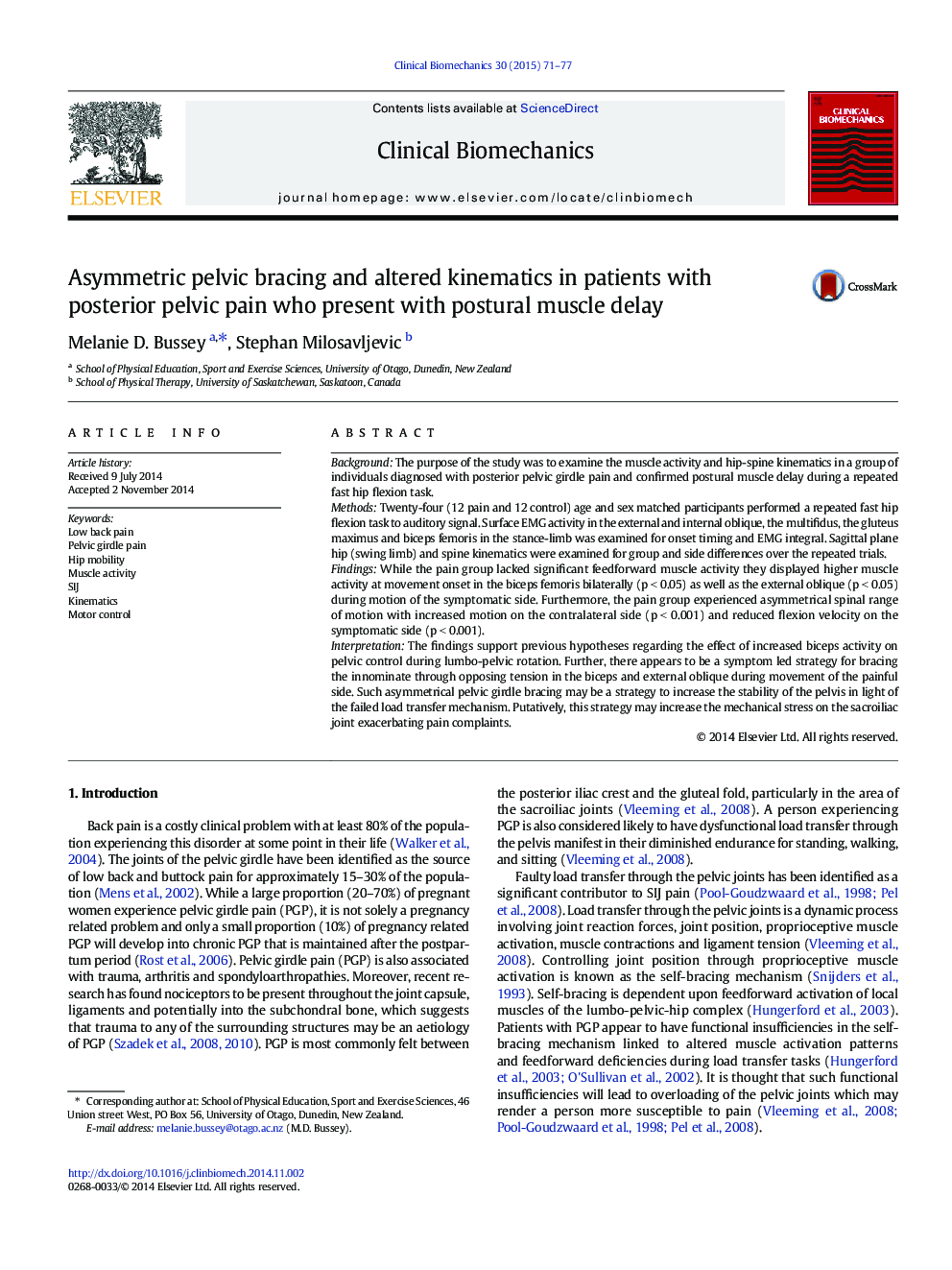| کد مقاله | کد نشریه | سال انتشار | مقاله انگلیسی | نسخه تمام متن |
|---|---|---|---|---|
| 4050264 | 1264915 | 2015 | 7 صفحه PDF | دانلود رایگان |
• Muscle activity and hip-spine kinematics was measured during fast Trendelenburg task.
• Participants with Pelvic Pain had delayed muscle activation compared to Controls.
• The Pain group had higher EMG activity at movement onset in the biceps femoris and the external oblique.
• The Pain group had asymmetrical spinal range of motion and reduced ipsilateral flexion velocity.
• Pelvic girdle bracing may be used to increase stability of a pelvis with failed load transfer mechanism.
BackgroundThe purpose of the study was to examine the muscle activity and hip-spine kinematics in a group of individuals diagnosed with posterior pelvic girdle pain and confirmed postural muscle delay during a repeated fast hip flexion task.MethodsTwenty-four (12 pain and 12 control) age and sex matched participants performed a repeated fast hip flexion task to auditory signal. Surface EMG activity in the external and internal oblique, the multifidus, the gluteus maximus and biceps femoris in the stance-limb was examined for onset timing and EMG integral. Sagittal plane hip (swing limb) and spine kinematics were examined for group and side differences over the repeated trials.FindingsWhile the pain group lacked significant feedforward muscle activity they displayed higher muscle activity at movement onset in the biceps femoris bilaterally (p < 0.05) as well as the external oblique (p < 0.05) during motion of the symptomatic side. Furthermore, the pain group experienced asymmetrical spinal range of motion with increased motion on the contralateral side (p < 0.001) and reduced flexion velocity on the symptomatic side (p < 0.001).InterpretationThe findings support previous hypotheses regarding the effect of increased biceps activity on pelvic control during lumbo-pelvic rotation. Further, there appears to be a symptom led strategy for bracing the innominate through opposing tension in the biceps and external oblique during movement of the painful side. Such asymmetrical pelvic girdle bracing may be a strategy to increase the stability of the pelvis in light of the failed load transfer mechanism. Putatively, this strategy may increase the mechanical stress on the sacroiliac joint exacerbating pain complaints.
Journal: Clinical Biomechanics - Volume 30, Issue 1, January 2015, Pages 71–77
